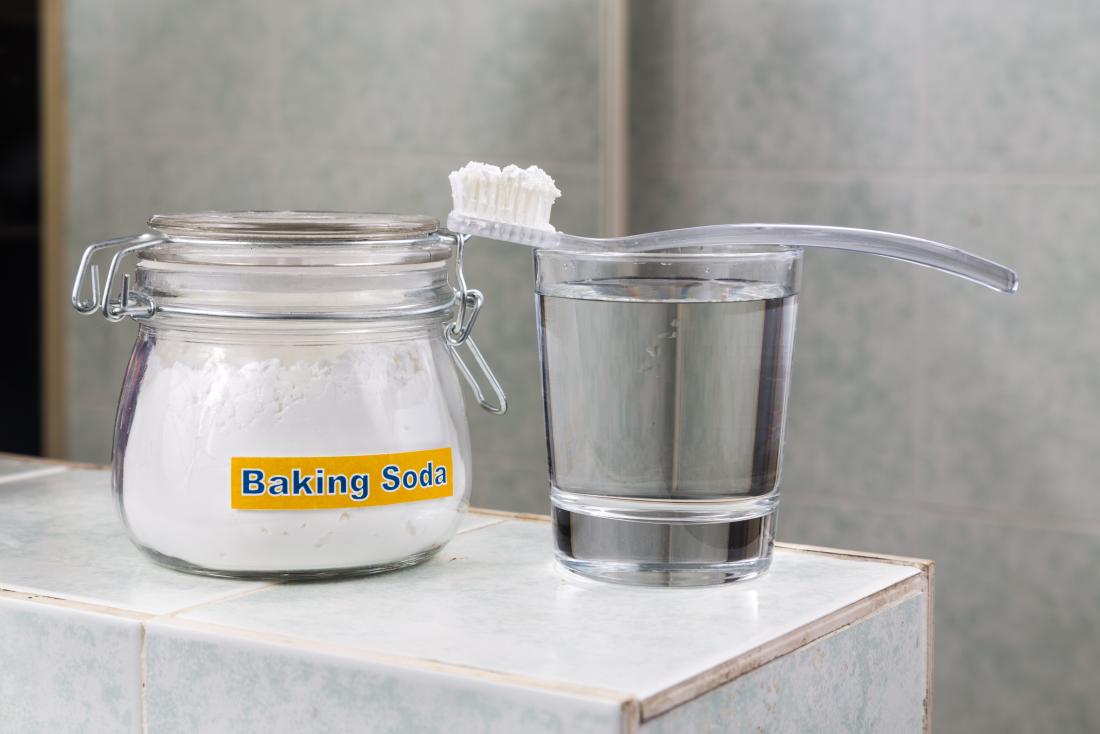These spots can vary in color from yellowish-brown to black-brown. The shape and size can vary. Some people may notice irregular, blotchy patches, while others have brown lines.
In this article, we look at what causes discolored spots to form on the teeth. We also describe ways to prevent and remove them.
Causes
The following factors can lead to brown spots on the teeth:
Foods and drinks

The tannic acid in red wine may cause a person to develop brown spots on their teeth.
Many dark-colored foods and drinks contain chemicals called chromogens. Like the tannic acid in red wine, these chemicals can stain tooth enamel.
Over time, these stains may become permanent, especially if a person has poor dental hygiene.
Foods and drinks containing artificial colors and dyes can also cause significant staining of the teeth.
Nicotine and tobacco products
These contain particles that can stick to microscopic pores in the tooth enamel. The particles build up with repeated use and can stain the teeth.
Stains resulting from smoking, chewing, or dipping tend to become darker and harder to remove over time.
Tartar
The thousands of bacteria in the mouth continuously mix with saliva and food particles to form a sticky, translucent film called plaque.
We keep levels of plaque under control by brushing and flossing. Poor oral hygiene causes plaque to harden into a more permanent coating referred to as tartar or calculus. Once tartar has formed, only a dental professional can remove it.
Aside from poor oral hygiene, the following factors increase the risk of developing tartar:
- smoking
- being very ill, bedridden, or immobile
- diabetes
- hormonal changes, such as those that occur during puberty, pregnancy, and menopause
- medicines that reduce the amount of saliva in the mouth, such as nerve blockers or management medications for AIDS
Tooth decay
Plaque and tartar bacteria eat the sugars that pass through the mouth. They then produce acids, which weaken enamel. The thick, filmy nature of plaque and tartar lead to these acids adhering to the teeth for long periods of time.
As the acids weaken the enamel, the yellowish layers of tooth below become more apparent. The teeth may then appear yellowish-brown. If the decay is severe enough, the acids can bore a hole, or cavity, through the tooth. This will be darkly colored.
Even tiny breaks and cracks in the teeth can allow bacteria to enter and lead to decay.
Many people develop dark spots of decay around the edges of dental fillings or crowns when bacteria has entered through crevices.
Dental cavities are often fairly uncomfortable and can be painful when large. Decay often leads to exposure of the root or nerve, so these teeth are often sensitive cold or hot foods and beverages.
Aging
As people age, the white enamel that protects the teeth slowly degrades, exposing the layers of yellow dentin underneath. This natural process can lead to yellowish-brown spots or large patches or discoloration.
Genetics
Everyone’s natural tooth color is different, and some may be darker than others.
Other genetic factors include:
- the strength of tooth enamel
- how the enamel responds to pigments and acids
- how much wear and tear the enamel is exposed to
- hereditary conditions, such as dentinogenesis imperfecta
- developmental conditions that interfere with proper bone and tooth formation
Previous dental work
Dental fillings, crowns, and bridges all eventually wear down and lose their color. Otherwise, the metal in fillings can transfer its color into the tooth over time.
Medications
Some medications cause tooth discoloration, particularly the antibiotic tetracycline and its relatives. This is common in young children.
Other medications associated with brown spots on the teeth include:
- glibenclamide (Glynase)
- chlorhexidine, a medicated mouthwash
Enamel hypoplasia
This condition is caused by a disruption in development which causes enamel to be hard but thin. The contours of teeth may contain chalky, white or yellowish-brown patches.
Enamel hypoplasia can be acquired, but it is sometimes present from birth. In this case, it is called amelogenesis imperfecta.
Common causes and risk factors for enamel hypoplasia include:
- insufficient intake of nutrients, especially calcium
- birth injury or premature birth
- viral and bacterial infections, such as measles or chicken pox
- maternal illness or malnutrition during pregnancy
- exposure to toxins and allergens
- fluorosis or the ingestion of fluoride
- tooth injury or damage
Celiac disease
Dental symptoms are often the first noticeable indications of celiac disease. They often include:
- patches or speckles of brown, yellow, or whitish discoloration
- weak enamel
- pitting
- translucence
The issues often concern the molars and incisors. They will appear on both sides of the mouth.
Fluorosis
Too much fluoride can stain enamel, especially in children younger than 8 years old.
This discoloration is called fluorosis. It may appear as white or greyish streaks across the teeth. In severe cases, fluorosis can cause dark brown spots and pits.
While symptoms may be similar to those of tooth decay, fluorosis is generally harmless.
Treatment

Brushing the teeth with baking soda and water may help to eliminate stains caused by food and drink.
The cause of brown spots on the teeth will determine the best treatment.
The following home remedies can eliminate stains caused by foods, drinks, or lifestyle habits such as smoking:
- Brush the teeth with a mixture of baking soda and water every few days
- Rinse the mouth with a diluted hydrogen peroxide solution every day or every few days. Always rinse the mouth with water afterward.
Many over-the-counter products can eliminate tooth discoloration. A person will usually see results after 1–2 weeks, though there is no guarantee.
Some over-the-counter options include:
- whitening mouthwashes and rinses containing hydrogen peroxide
- whitening toothpastes containing sodium hypochlorite
- whitening strips containing carbamide peroxide
- tray whitening systems containing carbamide peroxide bleaching gel
If discoloration is caused by tartar or medical conditions, a person may need to visit a dentist.
A dentist or dental hygienist will use instruments to scrape, blast, or rub tartar and plaque away from teeth. A dentist may also perform minor procedures to whiten the teeth and protect them from further decay. These include bleaching and applying topical fluoride.
Tooth discoloration associated with celiac disease is permanent. Most stains and spots caused by fluorosis or tooth decay are likewise irreversible.
For permanent or stubborn brown spots on the teeth a dentist may be able to hide discolorations, or prevent further discoloration, with:
- white composite fillings
- veneers
- crowns
They may also recommend wearing a night guard or retainer.
Prevention

Brown spots on the teeth may be prevented by practising good hygiene, including flossing once a day.
The easiest way to prevent brown spots on the teeth is by practicing good oral hygiene.
The following tips may help:
- Brush the teeth with a fluoride toothpaste for 2 minutes twice daily.
- Floss once a day.
- Rinse the mouth with water or brush the teeth after eating, especially when meals have contained high amounts of sugar, chromogens, or tannins
- Use a fluoride-based mouthwash daily. This is not recommended for children under 6.
- Regularly get dental cleanings and assessments.
- Stop using nicotine or tobacco products.
- Use a straw when drinking beverages other than water.
- Talk with a dentist about any habits that may harm the teeth, such as grinding.
The following can stain the teeth and weaken the enamel.
It is a good idea to avoid:
- sugary foods and drinks
- foods with artificial coloring
- coffee and tea
- red wine and dark liquors
- dark fruit juices
- citrus fruits and juices
- dark sauces, such as soy sauce and tomato sauce
Some foods can help to strengthen enamel and prevent discoloration. Those rich in roughage or fiber can help to scrub bacteria and bits of plaque off the teeth. Others form barriers to plaque or contain chemicals that help to neutralize the acids that weaken enamel.
Foods that may help prevent tooth discoloration include:
- green, leafy vegetables, such as kale, spinach, and broccoli
- cheeses and fermented yogurts
- high-fiber fruits and vegetables, such as apples, plums, pears, and celery
- foods rich in certain antioxidants, including carrots, ginger, and garlic
- whole grains and cereals
- nuts
Outlook
Brown spots on the teeth are often the result of poor oral hygiene, smoking, or consuming many dark foods and drinks.
Spots on the outside of the tooth can often be removed and are easy to prevent.
Rarely, brown spots on the teeth signal a medical condition. Or, they may be side effects of medication.
If brown spots are accompanied by other symptoms or not responding to over-the-counter treatments, a person should seek medical advice.
It is a good idea to speak with a dentist or doctor any time a person is unsure of the cause of discoloration.
Let’s block ads! (Why?)





